ICEINSPACE
|
Moon Phase
CURRENT MOON
Waning Crescent 30.8%
|

|
 |
The Transit of Venus: 1631 to the Present
Submitted: Tuesday, 25th October 2011 by Mike Salway
 |
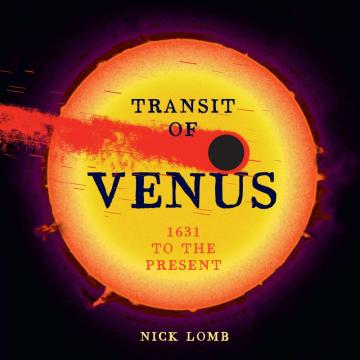 |

Click to Enlarge
The Transit of Venus: 1631 to the Present. By Nick Lomb. ISBN 978 1 742232690
 |
Having just written an article for IceInSpace on how to observe and photograph the Transit of Venus in June 2012, I was excited to receive the opportunity to review this book, The Transit of Venus: 1631 to the Present, written by Dr Nick Lomb, the Curator of Astronomy at the Sydney Observatory.
Published by NewSouth Publishing in association with Powerhouse Publishing, the book is a large hardcover book (240 x 235mm), 228 pages long and contains a great balance of text, with beautiful black and white and full colour illustrations and photographs.
A Transit of Venus, where the planet Venus crosses in front of the Sun from our view point, has fascinated astronomers for centuries. It’s an extremely rare event, with incredible historical significance for our understanding of our solar system, and also for the discovery of Australia.
What better backdrop for this story of adventure and exploration during a time when our knowledge of science and astronomy was increasing exponentially with the invention of the telescope and Kepler publishing his three laws of planetary motion.
The book is divided into 7 main sections, followed by a Glossary and Bibliography. The sections are:
- Introduction. The first section of the book talks about what a transit of Venus actually is, and what all the fuss is about.
- A spot of unusual magnitude: 1639. This section talks about the very first predictions of a transit across the Sun by Mercury and Venus, and the first observation of the transit of Venus by Jeremiah Horrocks in 1639.
- Frozen plains and tropical seas: 1761. The 1639 transit had been witnessed by only two observers. But leading up to 1761 it was a very different story. 50 years earlier, Edmund Halley implored scientists and astronomers to observe and measure the timings of the transit to help derive the value of the Astronomical Unit – the distance between the Earth and the Sun. Over 100 teams of astronomers in Europe were making plans to observe it from a variety of far-flung places. This piece of astronomical history would not go unnoticed.
- Venus of the South Seas: 1769. This section goes into detail about Captain James Cooks expedition to Tahiti to observe the transit, followed by his ‘sealed orders’ to locate the fabled ‘Unknown South Land’ believed to lie in the Southern Ocean. I really enjoyed the history.
- Capturing the transit: 1874 and 1882. Over a century since the last pair of transits, more and more astronomers around the world were prepared and ready to observe these transits, including at the newly established Sydney and Melbourne Observatories. Improvements in technology and invention of photography (including the photoheliograph) meant this was the first transit that would be photographed.
- Space-age transit: 2004. By the time of the next transit of Venus in 2004, the space age had arrived. In the intervening century astronomers and scientists had accumulated a vast body of knowledge relating to Venus and our solar system. Advances in technology meant that we were not only able to record the transit of Venus from space but that hundreds of amateur astronomers could produce their own stunning photographs.
- Observing the 2012 transit. This section talks about the upcoming 2012 transit of Venus, and includes some tables on dates and times of where it can be observed in Australia and New Zealand and how to safely view the transit.
 |
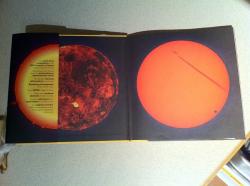 |  | 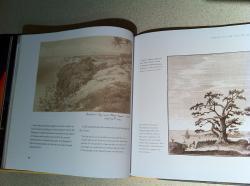 |

Click to Enlarge
Inside Cover
 |
 | 
Click to Enlarge
History and Sketches about Venus in the Pacific
 |
What I loved
- Extremely well researched and well presented. There’s some very interesting science, but it’s presented in a way that any layperson can understand.
- It’s an easy read. I finished it over about a week, reading it for about 30-45 minutes in bed each night; but I was looking forward to getting stuck into it each night.
- The book is full of fantastic photos and illustrations that bring the text to life. I really enjoyed the photos of old observing sites and instruments (and bearded astronomers :)).
- Even though I thought I knew a lot about the historical significance of the Transit of Venus, the book filled in a lot of gaps in my knowledge and highlighted things I simply didn’t know. I’ve come away enriched and with a much greater appreciation of the forefathers of modern astronomy.
- The stories! It’s simply hard to comprehend what they had to go through back then – travelling by boat for months at a time across the seas, not knowing exactly where they’ll land or where they’ll setup, bringing with them pre-fabricated observatories and domes, all their equipment and provisions to last them potentially months. And then having to determine their longitude, observe and/or photograph the transit, recording results that might not be used at all and might not be published for years or decades after! And that’s if it was clear on the day! I just loved it!
What I didn’t love as much
- Dispersed throughout the book, there’s many 1-2 page related side-stories or facts about something or someone related to the current transit. These contain great information, but they kept popping up in the middle of a paragraph when I turned the page. So either:
- I’d have to skip over a few pages to finish the paragraph/section I was on and then flip back, or
- I’d read the side-story and try to pick up from where I left off later on
I’m not sure what the solution could be here and it’s not a reason to not enjoy the book, but it annoyed me a few times.
- Since all the science was mostly already known by the 2004 transit, it wasn’t as important scientifically – so the 2004 section contained mostly photographs of Venus itself taken by the various space probes that have explored Venus in some way.
While some of the images were great, it felt like there was a few too many, and some of them weren’t really that great and would’ve been difficult for the average reader to comprehend or to understand what they were looking at.
- Not a huge deal, but the cover illustration confused me. I can understand why the black disc of Venus was made larger than it will actually be (artistic license, etc), but I’m not sure on why the red “tail” is there – I’m not sure why it was made to look like a fiery red comet.
 |
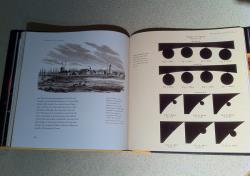 |  | 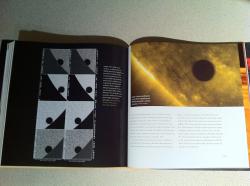 |

Click to Enlarge
Examples of some of the illustrations and sketches
 |
 | 
Click to Enlarge
Venus Transit in the Space Age
 |
Conclusion
Overall, the negatives above are really very minor and the content and layout of the book itself is outstanding and I thoroughly enjoyed reading it.
I’d recommend the book to anyone with an interest in history or astronomy, no matter what your level of expertise or experience. It’s an excellent companion to the 2012 Venus Transit and I hope it inspires you to observe the Transit of Venus across the Sun in June 2012! It’s the last chance in our lifetimes to witness this rare and historically significant event!
Review by Mike Salway (iceman). Discuss this review on the IceInSpace Forum.
|
 |
|